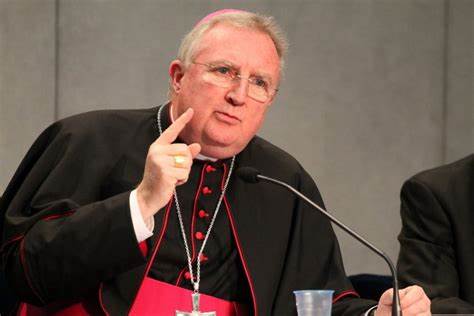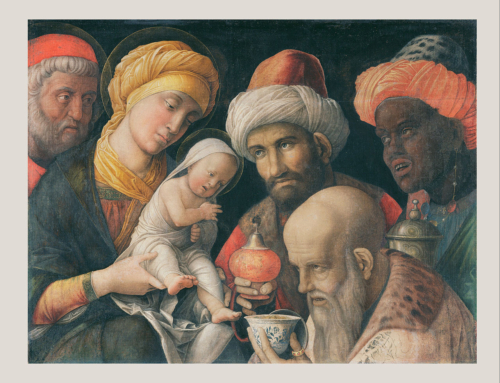With the latest restrictions on the Traditional Latin Mass from Cardinal Roche what will be the response from those who are devoted to the Traditional Latin Mass?
Allow me to reflect on something called “subversive obedience”. When I was a student at a certain Protestant fundamentalist university in the 1970s we were obliged to observe a fairly strict dress code. Blue jeans were prohibited. Men had to wear a button down collared shirt with a tie to morning classes. You can guess what happened. I and my fellow art students purchased corduroy Levis. Pants that were cut just and worn just like jeans. We got big plaid lumberjack flannel button down shirts with collars and finished off our outfit with outrageous silk ties from the 1940s salvaged from the Goodwill store. It was quite a flamboyant, creative outfit that flaunted the dress code while observing the letter of the law.
This happens whenever authorities seek to impose their will by stupid, oppressive legislation. I remember one boarding school in England that required the boys to wear khaki pants and the school blazer with school tie. The little boys colluded with the older boys and swapped uniforms so all across campus you would see strapping eighteen year old rugby players crammed into khaki pants and a blazer sized for a ten year old. Likewise the little boys traipsed around the school in hugely baggy pants with the cuffs rolled up and jackets with massive shoulders and sleeves rolled up to the elbows.
Granted that this admirable behavior is somewhat adolescent, but it it what people are driven to by narrow minded legalists who wish to impose their own ideology and preferences on others for some misguided idea that uniformity is the same thing as unity.
So with this in mind, what will be the response of those Catholics who are devoted to the Traditional Latin Mass given Rome’s latest round of restrictions? Several things: Some will migrate to the SSPX. Others will seek out other forms of reverent, traditional Catholic worship– an Ordinariate parish, a Byzantine parish or a Novus Ordo that is celebrated in a traditional manner. Others, who are more hard line, will practice subversive obedience. “We can’t have the Latin Mass in the parish church? OK. We’ll move it to the parish fellowship hall, the gym or the Rectory chapel. In fact, what we’re doing is raising the money to build a Latin Mass chapel on the church campus. We’ll worship there instead of the parish church.”
Then, if the legalist clericalists respond in due form, another rule will come out that bans the Traditional Latin Mass from any building on the parish church property. “OK.” respond the traditionalists, “We will worship on Sunday elsewhere. The Episcopalians, the Methodists or the Lutherans have offered us hospitality. The local TLM will be held in a Protestant Church.”
“But you can’t advertise it in your church bulletin!” cry the legalistic clericalists. “Never mind. We have our own email lists and we advertise with posters on the church door.” “But you can’t advertise with posters on the church door!” “Right. Got it. We’ll hand out flyers at church.” and most annoyingly (from the point of view of the clericalists) this will largely be done by the laity who are not hindered by something so cumbersome as a vow of obedience to their bishop.
You see how it goes.
What complicates this problem even further–and something which the Englishman Roche doesn’t seem to understand at all is the entrepreneurial spirit of American conservative Catholicism. I lived in England and know both the English Catholic Church and the Anglican Church very well. The English Catholics haven’t got an ounce of entrepreneurial spirit, and don’t understand this aspect of American religion. From the beginning of America as a country we’ve had separation of church and state and this has meant “If you want a church you have to pay for it yourself. The King isn’t going to fund it. Neither is Lord Balloon or Archbishop Redcoat. Get on and do it yourself.”
While the autocrats, bureaucrats, aristocrats and any other “crat” in Europe may dislike this independent spirit, they will have to get used to it. While the experts may lament the interference of hoi polloi they need to accept it, and in Catholic terms, if the laity get involved and get busy and keep the faith and promote the faith and evangelize well, isn’t that what the Second Vatican Council was all about? The present oppressive regime in the Vatican seems to be attempting to close the stable doors after the horse has bolted.
All the lovely talk about empowering the laity to do their job is just fine until the laity start actually doing their job of keeping the faith, teaching the faith to their children and evangelizing. I’ve often wondered, for instance, what happens when some modernist bishop who is all enthusiastic about lay people administering a parish finds that the lay people who have taken over are actually traditionalists. Whoops. We want lay people to be in charge–but not THOSE lay people!
So this American laity led entrepreneurial spirit is one thing to cope with. The other thing Cardinal Roche and his politburo need to understand is that the traditionalists have invested big time in their enterprise. The folks in the Vatican should take some time to stop and understand what, exactly, they are suppressing. To do so, let them view this video about the SSPX community of St Mary’s in Kansas. The traditionalist community have not only invested large sums of money in their project–more importantly they are invested emotionally and relationally. In other words, their families are invested. Those who are committed to the traditionalist movement in the Catholic Church have invested their lives and the lives of their children in something they passionately believe and sacrifice for.
Try suppressing that! The Vatican needs to realize that this is not a problem that will go away with legalistic restrictions from a meddling cardinal far away in Rome.
Finally, what would my advice be? I have outline my advice to traditionalists in this blog post.
To summarize, I advise folks to celebrate the Novus Ordo in a traditional way possible. Allow the Traditional Latin Mass to inform the celebration of the Novus Ordo. Ask yourselves what is most important. Is it truly the Latin language and the extraordinary form of the Mass that is so vital or is it that you value reverence, beauty and tradition? These are all possible within a reverent and traditional celebration of the Novus Ordo. So encourage reverence and respect, and most of all encourage a joyful Catholicism that is in love with Jesus and Mary, serving the poor, educating the young and living a vibrant life of faith–even if you aren’t particularly happy with the present regime in Rome.
PS: My book Letters on Liturgy gives some guidelines on developing and nurturing traditional Catholic worship and life.







Leave A Comment
You must be logged in to post a comment.